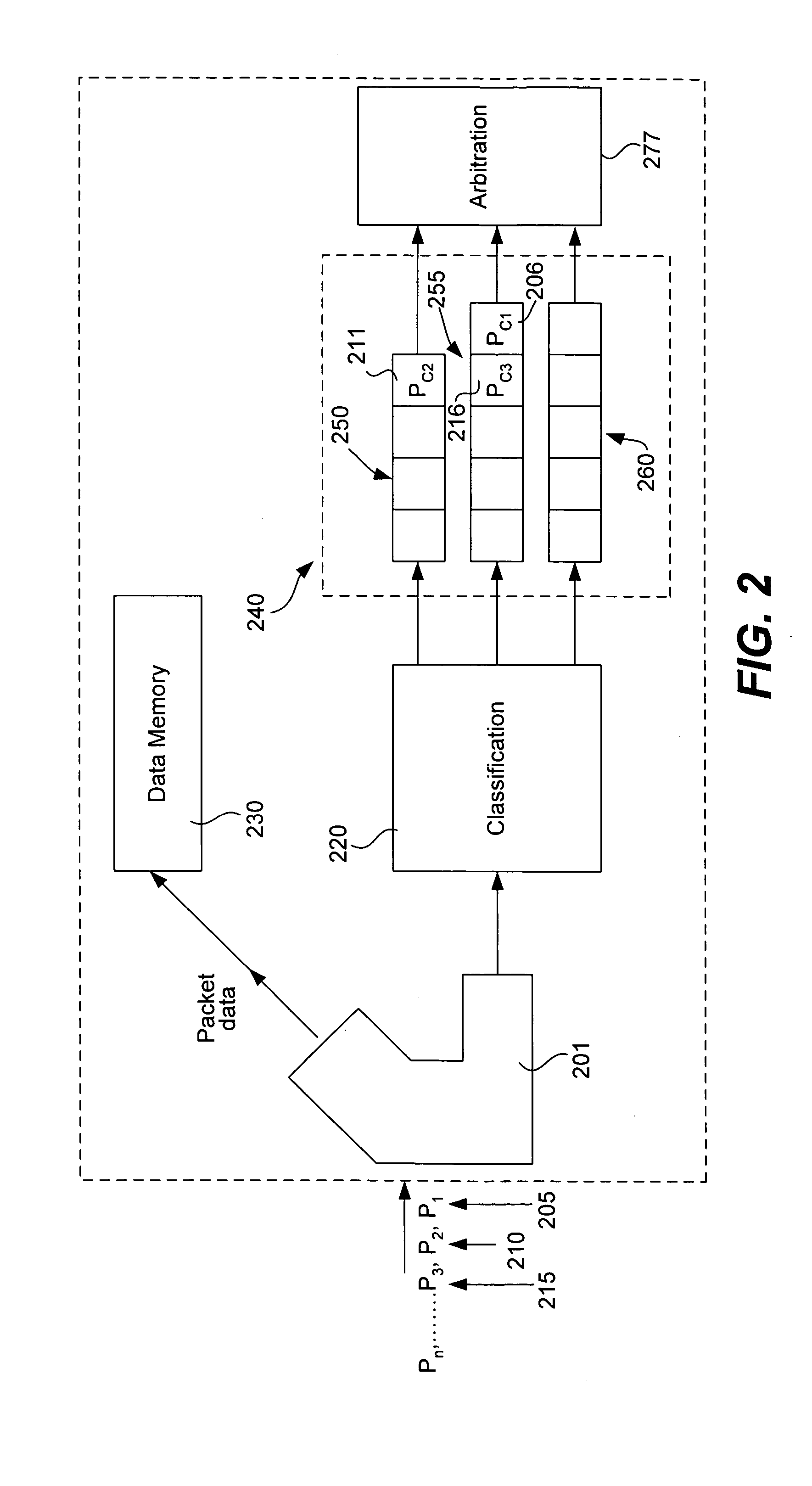Scalable approach to large scale queuing through dynamic resource allocation
a resource allocation and large-scale technology, applied in the field of network management, can solve problems such as the inability to allocate physical queues, and achieve the effect of reducing the number of physical queues
- Summary
- Abstract
- Description
- Claims
- Application Information
AI Technical Summary
Benefits of technology
Problems solved by technology
Method used
Image
Examples
Embodiment Construction
[0034]FIG. 2 illustrates a series of packets arriving at device 200, which is a network device in this example. After the packets arrive at port 201, they are classified by classification engine 220, which may be implemented in software, hardware or firmware. For example, each packet may be sorted according to control information such as its destination, its source, its priority, payload type, etc.
[0035] After the classification step, control information for each packet is assigned to a different one of the queues in array 240. Each of the queues in array 240 may be, e.g., a first-in, first-out (“FIFO”) buffer of a microprocessor (e.g., an ASIC). In this example, control information 206 for packet 205 is stored at the head of queue 255. Control information 216 for packet 215 is also stored in queue 255. Control information 211 for packet 210 is stored at the head of queue 250.
[0036] However, other packet information (e.g., the payload) that may require significantly more memory ca...
PUM
 Login to View More
Login to View More Abstract
Description
Claims
Application Information
 Login to View More
Login to View More - R&D
- Intellectual Property
- Life Sciences
- Materials
- Tech Scout
- Unparalleled Data Quality
- Higher Quality Content
- 60% Fewer Hallucinations
Browse by: Latest US Patents, China's latest patents, Technical Efficacy Thesaurus, Application Domain, Technology Topic, Popular Technical Reports.
© 2025 PatSnap. All rights reserved.Legal|Privacy policy|Modern Slavery Act Transparency Statement|Sitemap|About US| Contact US: help@patsnap.com



